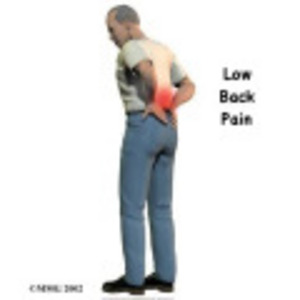If you suffer from chronic pain from conditions like osteoarthritis, low back pain and other musculoskeletal pain, you probably have tried everything your doctor suggests to deal with the never-ending pain and discomfort.
Many people don’t like the common side effects that pain killers like Hydrocodone, Vicodin and others can give you. For many people, these narcotic pain killers do not do enough to relieve the pain. Your body can build up a resistance to them and can cause dependence that is painful to overcome.
Muscle relaxers can sometimes help to give relief, especially so chronic pain sufferers can sleep at night. During the daytime hours, muscle rubs and pain relief patches can help.
For those people who have tried different medications both prescription and over the counter, Cymbalta may be the answer for relief from your chronic pain.
Cymbalta (duloxetine HCI) is an antidepressant. The FDA recently approved Cymbalta for the management of chronic musculoskeletal pain, including chronic osteoarthritis pain and chronic low back pain. Unlike pain medications, you only need to take Cymbalta once daily.
Eli Lilly, the manufacturer of Cymbalta, reports that in clinical studies of patients who suffer from chronic musculoskeletal pain, this antidepressant was shown to provide relief to patients.
Although the exact reasons why Cymbalta works to reduce chronic pain is unknown, researchers believe that the drug helps to lessen pain by enhancing the body’s natural pain suppressing system by increasing the activity of serotonin and norepinephrine in the brain and spinal cord.
As with any prescription medication there are side effects. Common side effects from Cymbalta include nausea, dry mouth, insomnia, constipation and fatigue. Sometimes these symptoms will fade as your body adjusts to taking the medication and other times a patient will decide to talk with their doctor about discontinuing the drug due to the side effects.
For a patient who has already dealt with the side effects of narcotic pain medications, trying Cymbalta may be an option. An estimated 70 to 85 percent of adult Americans experience low back pain. For almost 10 percent, this pain is chronic. Having another option for pain management is a great step for helping those who have not found relief in other medications.
Not everyone is a candidate to try Cymbalta. If you have taken another type of antidepressant called a Monoamine Oxidase Inhibitor (MAOI), are taking thioridazine or have uncontrolled narrow-angle glaucoma you should not take Cymbalta.
If you are already being treated with an antidepressant for anxiety or depression, you should advise your doctor. For patients who have bipolar disorder, taking Cymbalta can cause mania. There are some doctors who may prescribe an antidepressant to a bipolar patient for management of their depressive symptoms but often the patient cannot tolerate the manic symptoms that can occur.
Dealing with chronic pain and a mental illness such as bipolar disorder can be complicated. Make sure that the doctor who is treating you for your chronic pain issues is aware of the medications you are currently taking for your mental illness.
If you have tried different prescription pain medications without getting the relief that you need, talk to your doctor about giving Cymbalta a try. As with any prescription medication, what works to relieve one person’s pain may not work with another’s. It is an option for those who suffer from chronic pain.
http://newsroom.lilly.com/releasedetail.cfm?ReleaseID=527460







